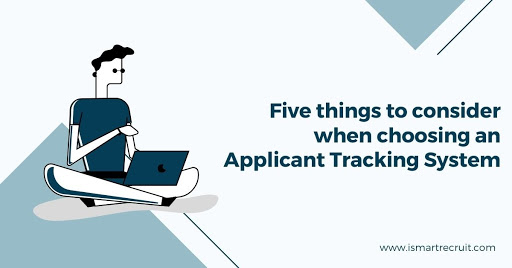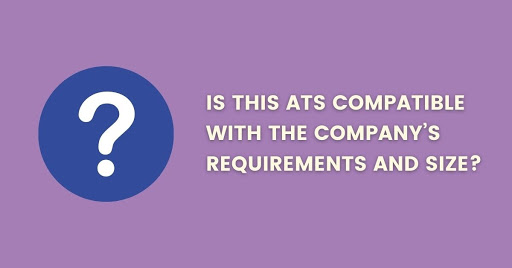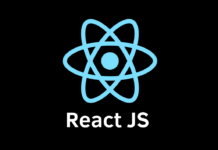
You keep hearing that to achieve your recruiting goals, you have to leverage technologies and use tracking software. We know what you’re thinking. – Aren’t we also one of those who praise smart algorithms, artificial intelligence, and recruiting systems? You are not wrong, and there’s a reason why these kinds of tools are becoming an essential part of easing the hiring process. – The majority of Fortune 500 companies use an Applicant Tracking System (ATS), for the incoming resumes, and you can read more here about one of those.
Due to its countless benefits such as storing everything in one place and enhancing organization, ATS proves to be a useful and efficient system for the hiring process. However, it’s time to go beyond that and think about what should you consider once you decide to purchase an ATS.
Thus, take in mind that you shouldn’t only examine what works for your company. – Analyze what makes an ATS great for your candidates too and whether it betters their job application process. We are showing you our pick of five things you should consider when choosing an Applicant Tracking System.
Is this ATS Compatible with the company`s requirements and size?

Not every ATS offers the same abilities and solutions, although most of the vendors try to make their system applicable to every organization. Company profiles have different categories for users: large enterprises or staffing agencies, and small or medium businesses. Therefore, you need to determine which ATS is the most compatible with the size of your company and question their assurances of being the exact match. If you are an enterprise that receives a large number of job applications during the recruiting campaign, can an ATS handle all the resumes and keep you updated?
Determine your needs and compare them with the solutions each ATS is providing. Write down your specific organization’s goals, and answer those needs. Which ATS has capacities that match the answers to your questions? Go further. Read reviews and use networking to get more insights. Consult with organizations that are similar to yours and are already using an ATS. Ask for their experiences and recommendations. You are choosing a tool that should help your HR team and lead to discovering great talents. Hence, you have the right to ask and be picky.
Can this ATS provide the candidates with the best experience?

If you want to avoid dissatisfied candidates, but also repelling future job applicants, you need to select an ATS that’s both employer and candidate oriented. Imagine investing in an ATS that causes glitches or a long and draining process that results in slow performance. That would make the job application experience a nightmare, and probably end in candidates migrating to another career site.
Don’t risk losing applicants and endangering your reputation. Contact the vendor and ask for a mock test of ATS. Find out if your candidates can upload their resumes, do they have to write redundant data, or spend too much time creating their profile? Make sure that there’s a reasonable number of clicks, that the system is well-performing and attractive. Provide candidates with fast and intuitive CRM & ATS because some of them could be your future employees.
Does the ATS allow smooth communication and automation?

What can an ATS offer if it doesn’t have the means to allow collaborative work of your entire HR? You should seek a system that can easily integrate into your existing technology and one that lets all stakeholders access the necessary data and information. Thus, the communication should flow smoothly across all levels. Every member of the team needs to be informed about the stages of a process, schedules, and interviews. And the candidates should have all the essential information in no time.
To ensure that everyone receives updates about interviews and be prepared, you need an engaging ATS with an automated process of communication. You shouldn’t have to worry that you will miss a meeting or that the applicant won’t get the required background information. ATS should take care of this and add all the important dates to your calendar. That way, you will have a system that keeps the conversation going and doesn’t leave out anyone.
Is the ATS social media-friendly?

Whether you like them or not, social media are one of the most significant parts of candidate sourcing and screening. Beneath the superficial level, there’s a big talent pool to be discovered, and you need an ATS that can leverage this possibility. As a great source of passive candidates, social media demand your attention and action.
It’s a great idea to explore and test whether it’s possible to implement your potential ATS into social media platforms. Does it allow you to share job posts, track the success rate, start a conversation, and engage candidates? Therefore, ask the vendor to explain the social media abilities of their ATS, and to show you how the posting process looks.
Is the ATS easy to use and accurate?

One of the main reasons organizations invest in ATS is because they allow a quick and logical search, resulting in a much shorter recruiting process. But don’t take this as a given. Unfortunately, you should be careful that your ATS provides you with actual results, and not only sugar-coated promises. Seek proper search functionality and ask the vendor to show the capacity of ATS in multiple live mock tests.
If you are a large organization with global goals, find out if the ATS can go that far and reach international applicants. Can you screen the search results by country, region, or another indicator? Are the results easy to comprehend and accurate? What search engine do they use? Is ATS capable of a fast resume analysis? Examine if you can use keywords to enhance the search and get the most compatible candidates. The ATS should ease and help you reach your recruiting goals. Therefore, you owe to yourself and your candidates to demand high quality and efficient ATS.











